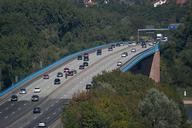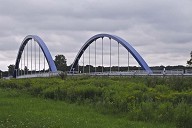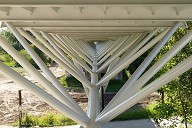The wave has reached Hesse
Wave expansion joints have been installed for the first time in Hesse, on the Kaiserlei Bridge in Offenbach. The innovative "snakes" across the carriageway are a visual eye-catcher - and a technical innovation. Basically, expansion joints form a flexible transition between a bridge and the continuing road on solid ground. Previously they were straight, but now they snake across the road and are also quiet and more economical.
First installation of an XW-1 expansion joint in Hesse
.The Kaiserlei Bridge on the BAB 661 is undergoing extensive rehabilitation. The work on the busy north-south link through the Offenbach-Frankfurt conurbation has to take place while traffic is still moving - a challenge that led the Frankfurt Office of Roads and Transportation to begin planning with renowned engineering firms from Hesse years in advance.
In the course of the renovation, the nearly 50-year-old bridge bearings and roadway crossings will also be replaced. "Bridge bearings" are located between the bridge piers and the bridge superstructure and ensure that vibrations and displacements of the superstructure are not transmitted to the piers, but that the superstructure can "slide" within certain limits. "Roadway transitions," also called expansion joints, primarily compensate for linear expansion of the bridge due to temperature changes. Expansion joints are located between the bridge and the mainland or between individual bridge sections.
This differential construction method allows large bridges to "move" today. Because the superstructure and substructure are effectively separated, excessive constraints and thus stresses on the overall structure are prevented, and the basic fabric of the bridge remains intact. When the bearings and expansion joints are getting on in years, only these components are replaced, the large remainder of the bridge remains - and above all: the bridge also remains passable for the entire construction period.
A special feature in Kaiserlei now are the new expansion joints at the approach ramps. Because they snake across the road in a wave-like pattern, the wheels of the vehicles no longer hit the joint head-on and at the same time: this makes them quieter than the previous joints. In addition, the new "snakes" are capable of bridging a larger gap - this simplifies and cheapens the construction. The joints are also easier to install and, last but not least, they are designed in such a way that they no longer require maintenance. So all in all, it's not only a visually striking solution, but also an economical one.
On the lower access ramp, the innovative snake was installed in August 2011. A total of approximately 6 m of the new transition structures will be used in each of two construction phases. This will allow traffic to continue to flow on the remaining side in each case, which is essential on the busy bridge.
The inventor of the construction, called XW-1 by experts, is the Munich-based company Maurer Söhne, which is regarded as the global market leader in expansion joints.
References
Structure Types
- About this
data sheet - Product-ID
5995 - Published on:
14/08/2012 - Last updated on:
17/03/2022

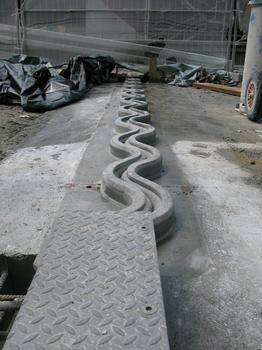
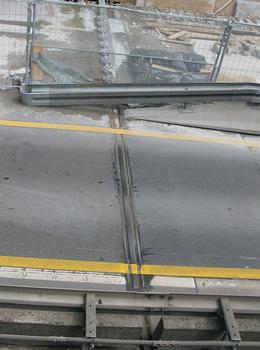
 MAURER SE
MAURER SE 
